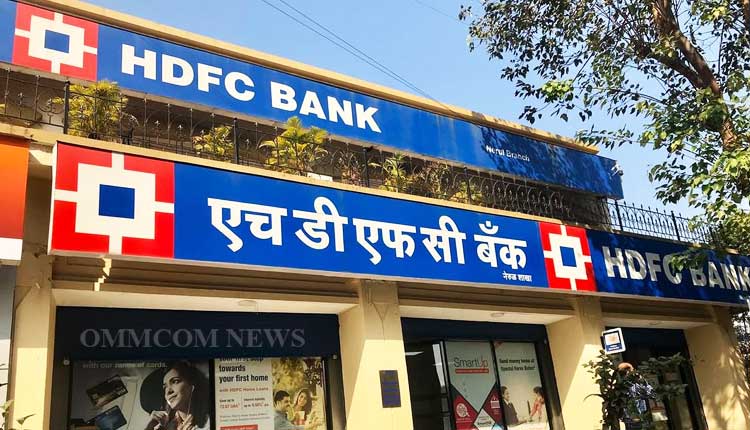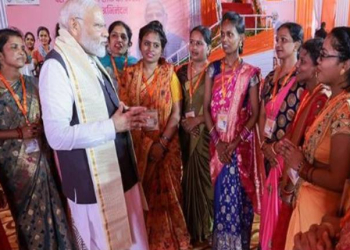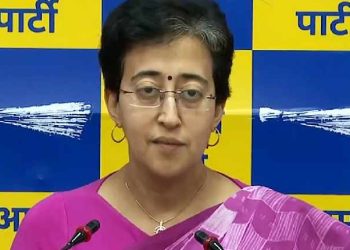Bhubaneswar: HDFC Bank, one of the highest CSR spenders in India spent Rs 736 crore towards their Corporate Social Responsibility initiatives. According to its annual report, in the wake of the COVID-19 pandemic, the Bank has aligned its efforts towards a ‘people-centric’ recovery through multi-dimensional interventions across livelihood, skill development, education, health, and natural resources.
HDFC has also got a go ahead from BSE and NSE to merge with HDFC Bank in India’s biggest-ever merger and acquisition.
HDFC Parivartan
Parivartan is the Bank’s umbrella brand for all social efforts. It aims to drive positive change in people’s lives by empowering them, to become self-sufficient and integrated with the society through direct or indirect interventions. Parivartan is also at the forefront of natural disaster response, successfully restoring infrastructure and rehabilitating communities. Parivartan works under five thematic areas. Based on the identified focus areas, the bank has set seven goals and 11 sub-goals that guide its community development activities.
1. Rural Development
The Bank’s Holistic Rural Development Programme (HRDP) focuses on comprehensive development through activities under NRM, Education, Skill Development and Livelihood, Financial Literacy and Healthcare. These activities are based on the belief that rural development is key to India’s growth.
The Natural Resource Management theme rests on the twin goals of enhancement of natural resources and their optimal utilisation for the economic development of the community. Under this theme, HDFC Bank has defined three goals. First, irrigating of 2 Lakh acres of unirrigated land and covering 1 Lakh acres with vegetation, to increase the area of land under cultivation, as well as to increase the cropping intensity of cultivable land.
Second, reducing the carbon and ecological footprint of communities by promoting clean and renewable energy solutions. This includes undertaking projects such as tree plantation for carbon sequestration and biodiversity conservation. The Bank is targeting 1,000 villages to have clean and renewable energy solutions and a minimum of 10 solar lights in each village. In addition, it is providing solar home lights, biomass chulha, biogas plant, solar study lamp, and a solar irrigation unit, covering 25% of the households in each village. The biomass stoves have helped improve indoor air quality, creating a direct positive impact on women’s health. Further, it targets to plant 2.5 Million trees by FY25.
Third, HDFC Bank has been promoting the use of chemical-free farming, to maintain the soil, environment, and human health by combining tradition, creativity and science. It trains farmers on different agricultural techniques for improving productivity and using locally produced manure and fertilisers, which not only aid in chemical-free farming but also help avoid expenditures on chemical fertilisers.
Through its rural development interventions the bank has managed to reach over 9.88 lakh households in over 3,335 villages in India.
2. Promotion of Education
HDFC Bank is implementing a programme to promote education in line with India’s Sarva Shiksha Abhiyaan. Under this theme, a multi-faceted support is provided to schools, to enhance the quality of education – which includes training the teachers, providing scholarships and career guidance to students, as well as infrastructure support to schools, such as building toilets and improving classrooms.
The Bank has dedicated programmes for improving teachers’ skills and scaling up no-cost solutions for improving existing systems and processes. It has also been working towards establishing libraries, scientific labs and digital classrooms. Under this theme, the aim is to enhance the quality of education in government schools through a three-dimensional, target-driven approach.
The first dimension aims to convert 2,500 traditional schools into smart schools, to establish a favourable learning environment and enable teachers to utilise various efficient teaching-learning methods. The second dimension aims to support meritorious yet underprivileged students with scholarships, to not let the financial crises interrupt the development of bright young minds. The third dimension targets quality of education in schools. The Bank aims to achieve 70% of students in all schools (those under intervention) at class appropriate learning (CAL) levels. The CAL levels are assessed as per the NCERT defined framework in classes 3, 5, and 8 through the National Achievement Survey in language, mathematics, EVS, science, and social science.
2.1 Digital Classrooms
The Smart Classrooms by Parivartan in the state-run schools are equipped with a pre-loaded projector and an interactive board. The in-built e-content is aligned with the concerned state curriculum, making learning fun and engaging for the students. For effective implementation of the digital classrooms initiative, the Bank provides training to the teachers making them the experts and custodians of the infrastructure.
Under its education initiatives, lives of over 2.09 Crore students have been impacted across the country.
3. Skills Training and Livelihood Enhancement
Under the Skills Training and Livelihood Enhancement theme, the Bank focuses on the economic development of farmers and youth in rural areas by providing means of generating income through agricultural or non-agricultural activities. Since its beginning, this initiative has assisted around 2.54 Lakh+ people. The overarching objective of it is to empower the disadvantaged by providing them with greater possibilities, assisting them in finding local jobs, increasing their household income and discouraging migration.
The initiative also supports women Self Help Groups (SHGs) or Joint Liability Groups (JLGs) by providing occupational skills training, financial literacy, credit counselling, livelihood finance, and market linkage.
4. Healthcare and Hygiene
The Bank has adopted an integrated approach related to healthcare and hygiene. It has not only been provisioning healthcare services to communities in the form of health clinics, nutrition programmes and immunisation drives, but has also been working on hygiene and sanitation in schools and communities. To complement its community-led sanitation efforts directed toward the proper disposal of wastewater, the Bank has been working on the institutionalisation of waste pickers through social and financial inclusion for dry waste management.
5. Financial Literacy and Inclusion
The first step towards true financial inclusion is financial literacy. Financial literacy camps are periodically conducted at the Bank branches. In addition to this, HDFC Bank has set up financial literacy centres across India. It is also working with non-profit partners to enhance financial literacy. The camps are designed to provide communities with information about the fundamentals of saving, investing and organised finance, enabling them to make informed decisions.
Digidhan, the flagship plan of the Bank under this pillar, is a mobile financial literacy programme that travels the length and breadth of the country’s hinterland, presenting the advantages of digital banking in an audio-visual format.
So far, the Bank has managed to organise over 23 lakh financial literacy camps across the country.
In FY2022 various initiatives by HDFC Bank has impacted the lives of over 9.6 crore people across the country.



















